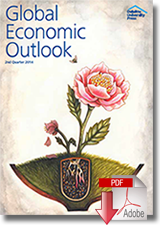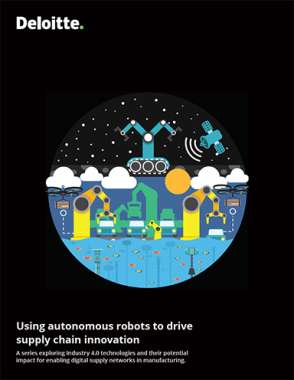Global Economic Outlook for Q2 2014
A major global economic trend - weakness in developed countries and considerable strength in emerging markets - appears to be reversing and the inflationary environment for these groups is very different.
In the United States and Europe, inflation is so low there are worries about deflation, but in emerging markets, inflation is uncomfortably high.
Furthermore, US monetary policy is beginning to change, and with it, the flow of capital is shifting away from emerging markets, causing downward pressure on currencies.
For much of the past few years, the major global economic trend was weakness in developed countries and considerable strength in emerging markets. That appears to be reversing. Growth is picking up speed in the United States and Europe, while it has declined considerably in most of the major emerging markets.
In addition, the inflationary environment in the two groups is very different. In the United States and Europe, inflation is so low that there are worries about deflation. Consequently, central banks have plenty of wiggle room to maintain aggressive monetary policies, thereby assisting the nascent recovery.
In emerging markets, on the other hand, inflation is uncomfortably high. The result is that central banks are maintaining tight monetary policies, thereby exacerbating economic weakness and delaying recovery. Finally, much of the trouble in emerging markets stems from a reversal of capital flows. In recent years, due to very low interest rates in the United States, capital has flowed to emerging markets, putting upward pressure on local currencies.
Global Economic Outlook for Q2 2014 Report
The second quarter edition of the Global Economic Outlook offers timely insights from Deloitte Research economists about the Eurozone, China, the United States, Japan, India, Russia, Brazil, and the United Kingdom. In addition, this issue’s special topic considers the revival in international trade and the resurgence of bilateralism.
Read the report here or download the full report.
Now, with US monetary policy beginning to change, capital is flowing in the opposite direction, causing downward pressure on currencies. The latter is one reason for the tightening of monetary policy in emerging countries.
Still, despite the slowdown in emerging markets, growth remains higher on average than in developed economies. That is because these countries continue to catch up to the most affluent countries. They can more easily boost productivity simply by shifting workers from farms to factories. Developed countries, on the other hand, are at the frontier of technology and business best practices. Their productivity growth must come mainly from innovation and implementation of new technologies and business practices. So, although the emerging countries are in a temporary funk, their longer-term prospects remain quite good.
In this edition of our quarterly report, we look at the short- to medium-term situation around the world. We begin with Alexander Börsch’s assessment of the Eurozone. He notes that, until recently, most growth in the region has come from exports. He predicts, however, that as the recovery unfolds at a moderate pace, more growth will come from consumer demand and investment.
Next, I offer my view on the outlook for China. I discuss the continuing slowdown in economic activity as well as the tough balancing act the government faces. On one hand, it wants to maintain adequate growth. On the other, it wants to restrain the growth of credit in the shadow banking system lest a financial crisis takes place. As such, I examine recent events in Chinese credit and currency markets and discuss how the government is attempting to resolve imbalances in these arenas.
Patricia Buckley then offers her views on the US economy. She takes a decidedly optimistic view on the coming year. Patricia walks the reader through the various major components of GDP and explains why there is cause for cheer. She notes positive influences on investment and trade, as well as a lack of negative influences on government spending.
Our next article focuses on Japan. In this article, I discuss some of the mixed signals coming from the Japanese economy. I also discuss the fears concerning the tax increase that took place on April 1 and the potentially damaging impact on economic growth. Finally, I examine a range of factors that will determine how Japan performs once the initial impact of the tax increase wanes.
In our article on India, Rumki Majumdar suggests that, following some rough patches, the worst is probably over. She also says that, although growth is likely to pick up for the remainder of this year, the longer-term performance of the Indian economy will hinge especially on the outcome of the upcoming election. Rumki notes that, in the past, economic growth was better when there was a stable government following elections.
Russia has been in the news lately. In his article on Russia, Akrur Barua notes that, even before the recent crisis, Russia’s economic performance was modest at best. Aside from the impact of the current political crisis, Akrur examines such issues as high inflation, a declining currency, and constraints on monetary policy. In addition, he focuses on the various ways in which the crisis will have a further negative impact on economic performance.
In their article on Brazil’s economy, Rumki Majumdar and Akrur Barua suggest that, absent reforms, the economic outlook for Brazil is poor. They note the various constraints on growth, including high consumer indebtedness, excessive regulation of the labor market and its negative impact on investment, tight monetary policy, and mixed signals from the government. They discuss the ways in which a failure to reform is stymying growth.
In his article on the UK economy, Ian Stewart expresses surprise at the strength of the recovery—surprise that is shared by many other economists. Still, Ian notes that productivity has lagged considerably. Without a sustained boost in productivity, the pace of recovery cannot be realized.
Finally, Akrur Barua and Sunandan Bandyopadhyay offer some interesting thoughts on the state of global trade. They discuss recent trends in trade and the impact on growth. They also examine recent movements toward and away from trade liberalization, with particular emphasis on two very important sets of negotiations.
About the Author
Dr. Ira Kalish is chief global economist of Deloitte Touche Tohmatsu Limited.
Copyright Notice
Copyright © 2014 Deloitte Development LLC. All rights reserved.
Source: Deloitte University Press
Related: 2014 Global (Supply Chain) Economy Outlook

Article Topics
Deloitte News & Resources
MHI Report: Investment increases as supply chains become more tech-forward and human-centric Global Trade Tensions, Material Shortages Not Expected to Ease in 2024 Blockchain in Supply Chain Continues to Mature Supply Chains Struggle to Access Reliable Emissions Data from Suppliers State of the industry: MHI releases annual report at ProMat 2023 MHI and Deloitte launch 2023 Annual Industry Report survey How Amazon Is Preparing For Fully-Electric Drone Delivery More DeloitteLatest in Supply Chain
Maersk Sees Silver Lining in Red Sea Shipping Challenges Happy Returns Partners With Shein and Forever 21 to Simplify Returns Baltimore Opens 45-Foot Deep Channel Following Bridge Collapse El Paso Border Delays Cost Juarez $32 Million Per Day in Economic Losses Ranking the World’s 10 Biggest Supply Chains The Top 10 Risks Facing Supply Chain Professionals Walmart’s Latest Service: Ultra Late-Night Delivery More Supply Chain














